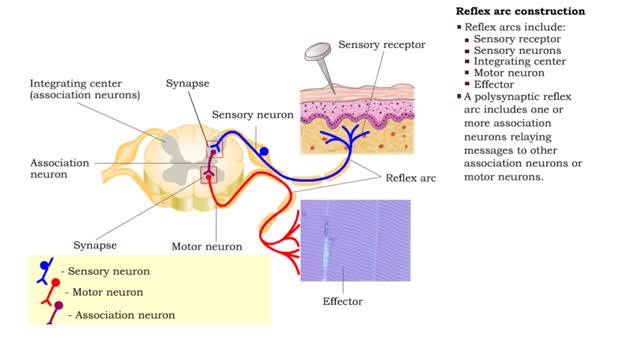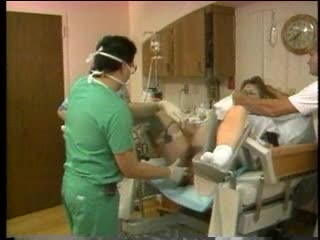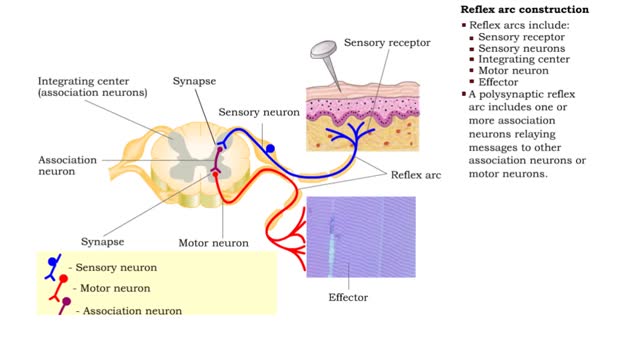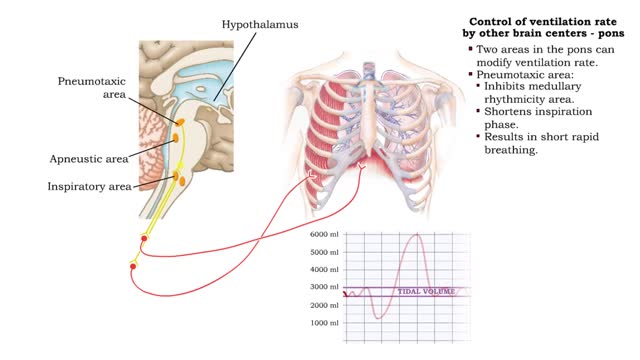Search Results
Results for: 'Pathway Mechanism of IP3'
Lipid catabolism ( ketogenesis and oxidation of glycerol) and Lipid anabolism (lipogenesis)
By: HWC, Views: 12072
• During excessive beta oxidation, the two-carbon fatty acid fragments are converted into acidic ketone bodies. • Ketosis, the overproduction of ketone bodies, can lead to acidosis (ketoacidosis) of the blood. • After lipolysis, glycerol is converted to pyruvic acid. • Pyruvic aci...
By: HWC, Views: 11784
• Somatic reflexes are the rapid, predictable, and automatic responses of skeletal muscle to changes in stimuli. • A reflex arc is the pathway followed by the nerve impulse producing the reflex. • Reflex arcs include: • Sensory receptor • Sensory neurons • Integrating c...
Second Stage of Labor and Delivery
By: Administrator, Views: 695
During labor forceful contractions move the fetus down the birth canal and expel it from the uterus. Signs and symptoms that labor is about to start can occur from hours to weeks before the actual onset of labor. Braxton Hicks contractions Irregular contractions that begin in the second trim...
First Stage of Labor and Delivery Video
By: Administrator, Views: 14910
During labor forceful contractions move the fetus down the birth canal and expel it from the uterus. Signs and symptoms that labor is about to start can occur from hours to weeks before the actual onset of labor. Braxton Hicks contractions Irregular contractions that begin in the second trim...
By: HWC, Views: 11945
• During digestion, complex carbohydrates are hydrolyzed into monosaccharides, primarily glucose. • The catabolism of glucose is the primary source of energy for cellular production of ATP. • The anabolism of glucose is important in regulating blood glucose levels. • Glucose cat...
By: HWC, Views: 11862
• Somatic reflexes are the rapid, predictable, and automatic responses of skeletal muscle to changes in stimuli. • A reflex arc is the pathway followed by the nerve impulse producing the reflex. • Reflex arcs include: • Sensory receptor • Sensory neurons • Integrating cen...
By: HWC, Views: 12536
▪ The primary cause of the medullary osmotic gradient is the active transport of solutes. • In the ascending limb of the loop, active transport of Na+ ions drives passive reabsorption of Cl- ions. • Addition of these ions to the interstitial fluid of the medulla increases its osmolarity...
Lipid absorption - end products & transport mechanism
By: HWC, Views: 11331
• The end products, fatty acids and monoglycerides, depend on bile salts for absorption. • Bile salts form micelles (tiny spheres), which ferry fatty acids and monoglycerides to epithelial cells. • Free fatty acids, monoglycerides, and some phospholipids and cholesterol molecules, dif...
Control of ventilation rate by other brain centers (posts, hypothalamus & cerebral cortex)
By: HWC, Views: 11689
Forced ventilation: • The inspiratory area stimulates accessory inspiratory muscles. • Inspiration is more forceful. • Inspiratory area activates expiratory area, which sends impulses to the expiratory muscles (internal intercostals and abdominal muscles). • Expiration muscles c...
Advertisement











